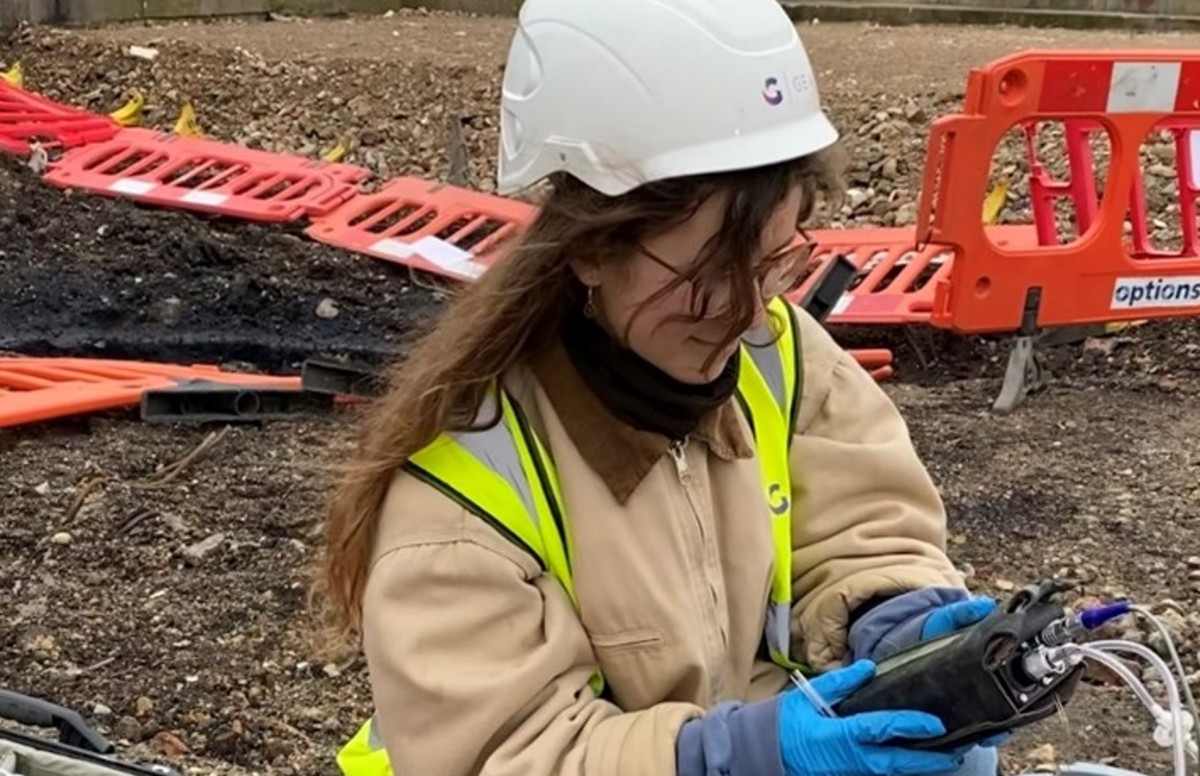Some Known Details About Geotheta
Some Known Details About Geotheta
Blog Article
Getting The Geotheta To Work
Table of ContentsGeotheta for BeginnersGeotheta for DummiesGetting The Geotheta To WorkSome Known Details About Geotheta The Geotheta Statements

They carry out website examinations, collect samples, do lab tests, and examine data to evaluate the viability of the ground for building projects - Geo Tech Engineering. Based upon their findings, geotechnical engineers provide referrals for structure design, incline security, preserving frameworks, and mitigation of geotechnical risks. They collaborate with various other specialists, such as designers, architectural designers, and construction groups, to ensure that geotechnical factors to consider are incorporated right into the overall project layout and execution
By evaluating the actions and homes of dirt and rock, they can determine potential geotechnical threats such as landslides, soil settlement, or incline instability. Their knowledge aids prevent failures or crashes that can endanger lives and home. Right here are some thorough duties and duties of a geotechnical engineer: Site Investigation: Geotechnical designers conduct site investigations to gather information on subsurface conditions.
They analyze the information to understand the properties and habits of the soil and rock, including their stamina, leaks in the structure, compaction features, and groundwater problems. Geotechnical Analysis and Style: Geotechnical designers analyze the data collected during site examinations to assess the stability and suitability of the site for building and construction projects. They execute geotechnical computations and modeling to assess elements such as birthing capability, negotiation, incline security, lateral earth pressures, and groundwater circulation.
Our Geotheta Ideas
Foundation Layout: Geotechnical designers play a critical duty in creating structures that can safely sustain the intended framework. They evaluate the soil problems and lots requirements to figure out the suitable structure type, such as superficial foundations (e.g., grounds), deep foundations (e.g (https://moz.com/community/q/user/geotheta?_gl=1*xkyvtd*_up*MQ..*_ga*NjU0Mjk2NzIxLjE3MjI2MDU1Nzc.*_ga_DS7K9Q3S5W*MTcyMjYwNTU3Ni4xLjAuMTcyMjYwNTU3Ni4wLjAuMA..)., piles), or specialized methods like soil renovation. They think about aspects such as settlement limits, bearing ability, and soil-structure interaction to create ideal foundation designs
They assess building and construction strategies, display website tasks, and carry out area inspections to verify that the style recommendations are complied with. If unanticipated geotechnical problems arise, they analyze the circumstance and give referrals for remediation or changes to the design. Threat Analysis and Reduction: Geotechnical designers analyze geotechnical dangers and dangers connected with the project website, such as landslides, liquefaction, or dirt erosion.

Collaboration and Interaction: Geotechnical designers work closely with other professionals associated with a job, such as designers, structural designers, and building groups. Reliable communication and collaboration are necessary to integrate geotechnical considerations into the general project layout and construction process. Geotechnical engineers give technological expertise, response questions, and guarantee that geotechnical requirements are fulfilled.
Some Known Incorrect Statements About Geotheta
Here are some kinds of geotechnical designers: Structure Designer: Structure engineers concentrate on making and analyzing foundations for structures. They analyze the soil conditions, tons requirements, and website characteristics to determine one of the most appropriate foundation type and style, such as shallow foundations, deep structures, or specialized techniques like pile foundations.
They examine the elements influencing slope stability, such as soil properties, groundwater conditions, and incline geometry, and create techniques to stop slope failures and reduce risks. Quake Designer: Earthquake designers concentrate on evaluating and designing frameworks to stand up to seismic pressures. They analyze the seismic hazard of a website, assess dirt liquefaction possibility, and establish seismic style criteria to make certain the safety and resilience of structures throughout earthquakes.
They perform field testing, collect samples, and analyze the collected data to define the soil homes, geologic developments, and groundwater problems at a site. Geotechnical Instrumentation Engineer: Geotechnical instrumentation designers focus on tracking and measuring the behavior of dirt, rock, and structures. They set up and preserve instrumentation systems that monitor factors such as dirt negotiation, groundwater levels, incline activities, and architectural variations to evaluate efficiency and provide very early cautions of prospective problems.
The 6-Second Trick For Geotheta
They carry out tests such as triaxial examinations, consolidation tests, straight shear examinations, and leaks in the structure tests to gather information for geotechnical evaluation and design. Geosynthetics Engineer: Geosynthetics engineers focus on the layout and application of geosynthetic materials, such as geotextiles, geogrids, and geomembranes. They use these products to boost dirt stability, strengthen slopes, give drain solutions, and control disintegration.
They have a tendency to be investigatory people, which suggests they're intellectual, introspective, and inquisitive. They are interested, methodical, rational, analytical, and logical. Several of them are likewise social, meaning they're kind, charitable, cooperative, client, caring, helpful, understanding, sensible, and pleasant. Does this seem like you? Take our complimentary occupation examination to learn if geotechnical engineer is one of your top profession suits.
In the workplace atmosphere, geotechnical engineers use specialized software application devices to do computations, produce designs, and analyze information. They prepare records, evaluation task requirements, communicate with customers and team participants, and coordinate job tasks. The office setting provides a helpful atmosphere for research study, analysis, and partnership with various other experts associated with the task.
The 10-Second Trick For Geotheta
They regularly visit job websites to conduct site examinations, analyze geotechnical problems, and gather information for evaluation. These gos to involve taking a trip to different areas, often in remote or challenging surfaces. Geotechnical engineers might execute soil sampling, conduct examinations, and display construction activities to make sure that the geotechnical aspects of the project are being carried out appropriately.
Geotechnical designers likewise work in specialized geotechnical laboratories. Geotechnical laboratory designers work extensively in these atmospheres, taking care of testing tools, operating instruments, and tape-recording information.
Report this page